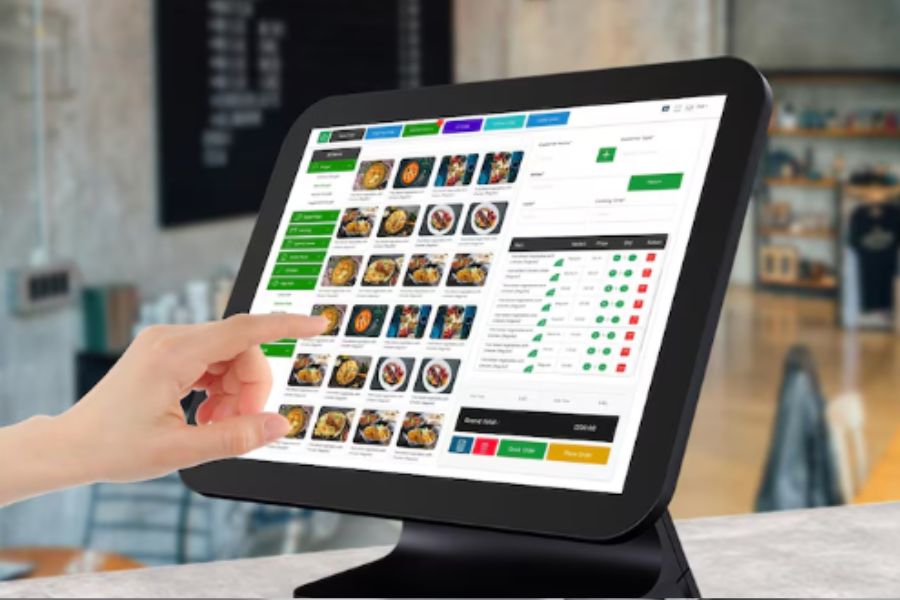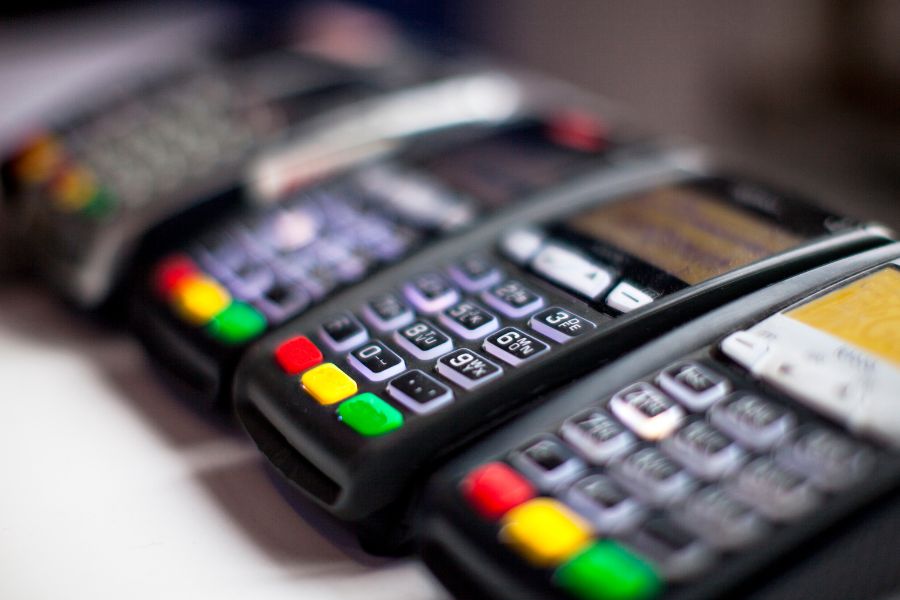Imagine shopping online, adding items to your cart, then picking them up at the nearest store without a hitch. Or returning a product bought online at a local shop without any hassle. Customers today want this kind of simple, connected shopping experience. If your retail business isn’t using an omnichannel POS system, you’re probably missing out on sales and chances to build customer loyalty.
Here’s why an omnichannel approach matters and how it can make your store stand out.
Highlights:
- An omnichannel POS system connects your online and in-store operations, creating a unified platform for sales, inventory, and customer data across all channels.
- By delivering consistent shopping experiences, personalized rewards, and real-time inventory access, an omnichannel POS encourages repeat purchases and increases overall customer spend.
What Is an Omnichannel POS System?
An omnichannel POS system connects all your sales channels: online stores, physical locations, and even mobile shopping. It syncs real-time sales data, customer information, and inventory levels. This helps you manage your retail business from one place, making shopping smooth and consistent for customers, no matter how they shop.
If traditional POS systems handle only in-store sales, an omnichannel solution gives you a clear view across every channel. This means less confusion, fewer errors, and happier shoppers.
A comprehensive omnichannel POS makes integration easy. It syncs with your online store, social media sales, mobile apps, and brick-and-mortar shops. Here’s what makes these systems stand out:
- Real-time inventory management: Products sold online instantly update availability in stores.
- Unified customer profiles: Customer shopping history and preferences are available across every channel, so you can personalize interactions.
- Flexible shopping and returns: Supports ‘buy online, pick up in-store’ (BOPIS) and ‘buy online, return in-store’ (BORIS).
- Mobile checkout: Lets staff handle purchases anywhere in the store, shortening lines and improving service.
Reasons Your Business Needs an Omnichannel POS System
Shoppers expect convenience. Most won’t wait or tolerate poor experiences. When buying gets tricky, they’re gone. An omnichannel approach helps you meet these high expectations by offering consistency. Customers who shop online at midnight or in-store during busy afternoons get quick service, accurate information, and personalized offers.
Having all customer data in one place changes the game. With a unified view of customer buying habits, you can make smart business decisions. You can see what each shopper likes, how often they visit, and what makes them buy more. This lets you target them with deals they’ll use, turning casual shoppers into loyal fans.
Plus, central customer data reduces errors and improves service. No one likes repeating their story every time they visit. An omnichannel POS recognizes each customer instantly, creating smoother and friendlier interactions.
Top Benefits of Implementing an Omnichannel POS System
Boosting Revenue Across Multiple Channels
Omnichannel shoppers aren’t just browsing. They spend more. A Harvard Business Review study of 46,000 customers found that omnichannel buyers spent 4% more per in-store visit and 10% more online compared to single-channel shoppers. The more channels they used, the more they spent. Shoppers using four or more channels spent 9% more in stores on average.
But it doesn’t stop at the first purchase. These customers tend to return more frequently. Within six months of their first omnichannel experience, they made 23% more repeat visits and were significantly more likely to recommend the brand to others. In short, retail experiences that span web, mobile, and in-store touchpoints drive not only higher spending but also better customer retention and brand advocacy.
Enhancing Customer Experience and Satisfaction
Consistency is key when it comes to customer satisfaction. An omnichannel POS removes the disconnect between online and offline shopping. A customer might explore your product catalog on their phone, check stock availability at their nearest store, and complete the purchase in person, all without repeating steps or losing information.
This seamless transition between channels reduces friction, eliminates confusion, and builds confidence. Shoppers appreciate the flexibility, and when they get a consistent experience no matter how or where they shop, they’re more likely to return.
Increasing Customer Loyalty and Retention
An omnichannel POS system supports long-term customer relationships by making personalization easier. It tracks buying behavior across channels and creates a single customer profile, allowing you to recognize loyal buyers and personalize offers based on actual activity.
Think beyond generic discounts. A customer who regularly buys skincare products online might receive a targeted in-store promotion or early access to new arrivals. Personalized rewards and simple redemption options, like applying loyalty points both online and offline, keep customers engaged and returning. And since retaining existing customers is often more cost-effective than acquiring new ones, this directly supports your bottom line.
Improving Inventory Management
Accurate inventory is one of the biggest challenges in retail, especially when managing multiple sales channels. Omnichannel POS systems solve this by syncing stock levels in real time. When a product is purchased online, the in-store inventory adjusts instantly, etc.
This reduces the risk of overselling, prevents lost sales due to out-of-stocks, and gives your team better visibility into what’s moving and what’s sitting. You can also set reorder alerts and track performance by location, helping you make smarter decisions about restocking and transfers.
Maintaining Product and Pricing Consistency
Nothing frustrates customers faster than seeing different prices or outdated product details depending on where they shop. An omnichannel POS keeps product catalogs, pricing, and promotions synced across every channel – online, mobile, and in-store.
Customers get consistent information no matter how they interact with your brand, which builds trust and reduces abandoned carts or in-store confusion. For your team, it also eliminates the manual work of updating each system separately.
Simplifying Operations and Saving Time
Managing multiple retail channels can overwhelm even experienced teams. A unified POS system reduces manual input and streamlines daily operations like returns, stock updates, promotions, and reporting from a central dashboard.
This means fewer errors, faster workflows, and a smoother experience for both staff and customers. Your team can focus more on customer service and less on administrative tasks. Over time, that translates into stronger performance and higher employee satisfaction.
Choosing the Right Omnichannel POS System for Your Business
Not every omnichannel POS system is the right fit for your store. Picking the best solution requires a thoughtful approach. Here’s how you can make the right choice without the headache.
Evaluating Essential POS Features
Start by identifying the features your store genuinely needs. Do you require real-time inventory syncing? Is in-store pickup or mobile checkout a priority? Would integrating customer loyalty programs streamline your marketing?
Make a list of must-haves versus nice-to-haves. This helps you avoid systems that are bloated with features you won’t use or are missing the functions that truly matter to your daily operations.
Determining Your Budget
POS systems come with different pricing models – monthly subscriptions, one-time licenses, or tiered plans based on users or features. But the initial cost is only part of the equation. Factor in hardware, staff training, data setup, and ongoing support.
Allocating budget for long-term use, not just the setup, prevents surprises down the line, and you can select a system that fits your current needs while leaving room to scale.
Comparing Different Types of POS Systems
Omnichannel POS solutions come in different types. You have cloud-based, on-premise, and hybrid systems. Cloud-based POS options store data online, giving you easy access from anywhere. On-premise systems store data locally, giving you more control but requiring more IT management. Hybrid systems blend both, giving flexibility in managing your business data.
Choose the type that matches your retail operations. Small businesses usually prefer cloud solutions due to ease and cost, while larger stores may like the added control of hybrid or on-premise setups.
Shortlisting and Evaluating POS Vendors
Once you have a clear idea of your features, budget, and preferred system type, start looking at POS providers. Read reviews, talk to fellow retailers, and ask vendors plenty of questions. Consider these points when comparing vendors:
- Ease of use: Can your staff learn quickly?
- Reliability: Does the vendor have a good track record?
- Support: Is help available when you need it?
- Scalability: Can the system grow as your business grows?
Pay attention to the onboarding process as well. A vendor that provides clear setup guidance and responsive support from day one can save you weeks of frustration later.
Why ConnectPOS Is Built for Omnichannel Retail Success
ConnectPOS is a popular omnichannel POS system used by thousands of retailers globally to unify sales, improve customer experiences, and raise profits no matter how your customers shop.
With ConnectPOS, your retail business runs smoothly. Your sales, inventory, customer info, and loyalty programs are all connected in one simple platform. Every shopper gets the same great experience, whether they’re in-store, online, or shopping on their phone.
What sets ConnectPOS apart?
- Real-time synchronization: Keeps online and physical stores connected seamlessly.
- Unified customer profiles: Know your customers better to provide personalized shopping experiences.
- Flexible fulfillment: Easily handle ‘click-and-collect’ (BOPIS) and ‘return-in-store’ (BORIS).
- Integrated loyalty and rewards: Keep customers coming back with targeted offers.
- Advanced inventory management: Manage products easily across multiple stores and warehouses.
- Mobile POS: Sell products anywhere in your store, cutting down wait times.
- Customizable promotions: Tailor discounts and special deals instantly.
- Detailed analytics: See clear, actionable data about your store’s performance.
- Smooth integrations: Works effortlessly with Magento, Shopify, BigCommerce, major ERP systems, CRMs, and payment platforms.
- Flexible customer journeys: Supports self-service and PWA for enhanced customer convenience.
- Built for all retail sectors: Perfectly fits industries like Apparel, Home & Furniture, Vape, Grocery & Supermarket, and more.
ConnectPOS helps you do more than sell products. It helps you build lasting customer relationships, makes day-to-day operations simpler, and positions your business for long-term success.
FAQs: Omnichannel POS Systems
1. How does an omnichannel POS system differ from a traditional POS system?
Traditional POS systems handle sales and inventory for just one channel, usually in-store. An omnichannel POS system manages and syncs data across multiple channels like online stores, physical locations, and mobile apps. This gives shoppers a consistent buying experience no matter where they shop.
2. How does an omnichannel POS system enhance customer loyalty?
An omnichannel POS offers consistent, personalized experiences at every touchpoint. Features like integrated loyalty programs and tailored discounts encourage customers to shop repeatedly. Shoppers feel valued and understood, increasing their loyalty.
3. Can an omnichannel POS system integrate with existing e-commerce platforms?
Yes. Many omnichannel systems integrate easily with e-commerce platforms like Magento, Shopify, and BigCommerce. They keep inventory, customer data, and sales information synchronized across your online and physical stores.
4. What challenges might retailers face when implementing an omnichannel POS system?
Retailers may run into integration challenges, staff training hurdles, and issues keeping data accurate across channels. Choosing a flexible, scalable omnichannel POS like ConnectPOS helps manage these issues effectively, reducing disruption to your business.
Final Thoughts
Choosing the right omnichannel POS system helps your business grow sales, improve customer loyalty, and simplify everyday tasks. By uniting your online and offline channels, you meet customer expectations easily and provide experiences that keep shoppers coming back. With better inventory management, consistent pricing, and clear customer insights, your retail operations become simpler and more effective.
To succeed with omnichannel retail, you need a solution that adapts easily to your needs. ConnectPOS makes this simple by unifying your sales channels, giving you clear data, and supporting flexible customer experiences. If you’re ready to improve your retail business and build stronger relationships with customers, ConnectPOS is here to help.
Ready to make omnichannel retail work for your business? Reach out to our team and get started today.



